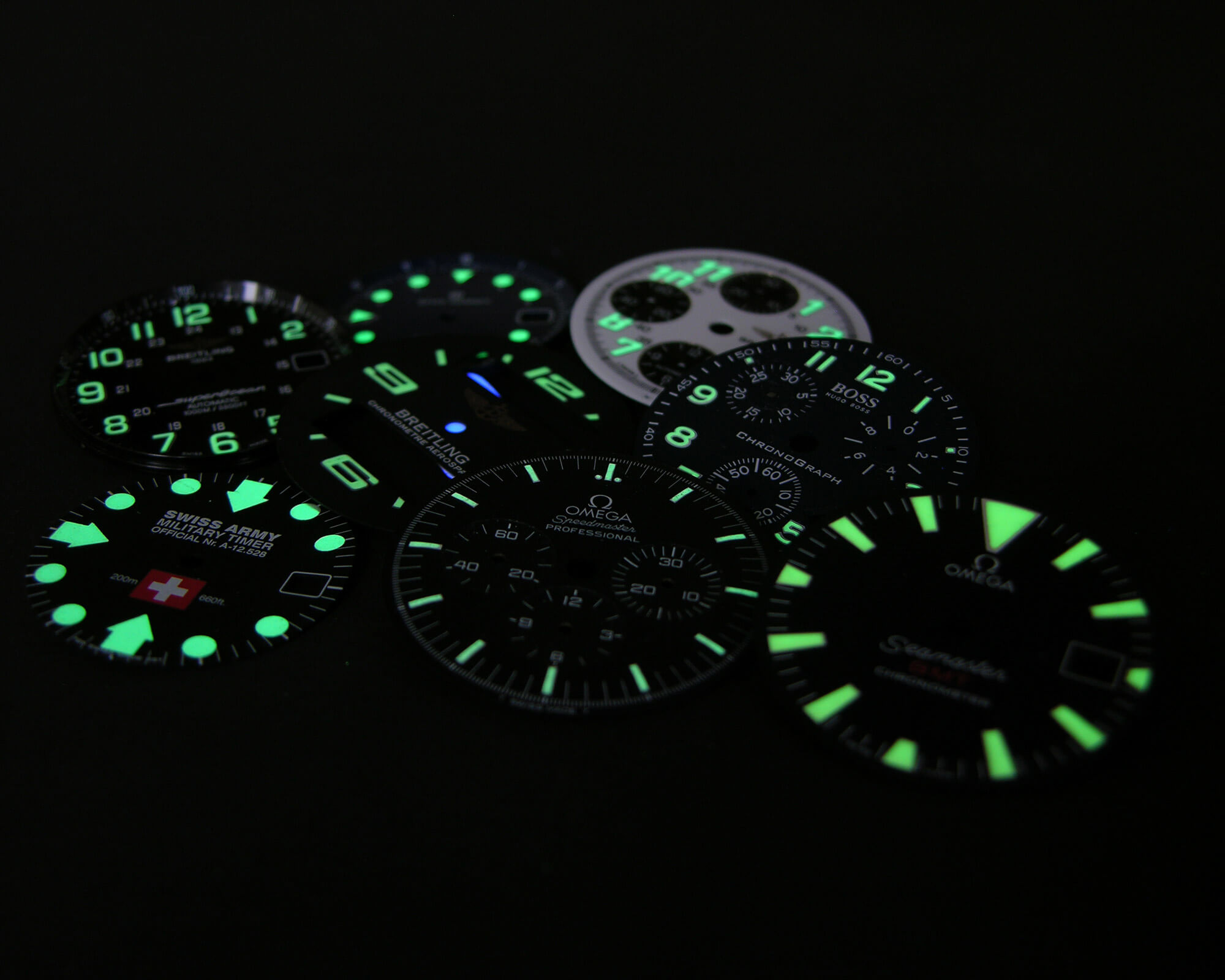It is the late seventeenth century, and Pope Alexander VII awaits the latest demonstration of Italian ingenuity: a night clock, invented by brothers Matteo, Pietro Tommaso and Giuseppe Campani, that will enable the pontiff to read the time in the dark. Instead of hands, the clock has a rotating disc bearing the hours and fractions of the hour that are illuminated by a candle placed behind an opening in the dial. Some three centuries later, in October this year, HYT revealed its answer to night-time readability with H4, a watch that generates its own electricity. Between the two, watchmakers experimented with radioactivity before turning to less hazardous technologies, always with the aim of showing hours and minutes round the clock.
In 1898 Pierre and Marie Curie isolated radium, the most radioactive metal at that time and the basis for a new luminescent substance
Radium and tritium
In the early twentieth century, portable timepieces began their migration en masse from the pocket to the wrist, yet the question of how to easily tell the time in the dark remained unresolved. The watch industry was already investigating ways to simplify chronograph production and some, such as Le Phare, were inspired to look for similar opportunities for the minute repeater. If time couldn’t be seen, it could at least be heard. A scientific breakthrough would change the course of events when in 1896 the French physicist Henri Becquerel discovered radioactivity, which is the property of certain atoms to excite others. Two years later, Pierre and Marie Curie isolated radium, the most radioactive metal at that time. Henceforth, it became possible to produce a luminescent (light-emitting) substance.
This was a tremendous game-changer for the watch industry, which began coating hands and numerals with this new material. The dangers of radioactivity were largely unknown, with the result that radium came into widespread use. It wasn’t until the late 1930s that the harmful consequences of contact with radioactive materials first came to light, and not until 1963 that the use of such materials was strictly regulated in Switzerland. Public outcry led to radium being replaced by tritium, which functions according to the same physical principles but with less harmful emissions. Even so, tritium went the same way as radium, except in gaseous form. Brands such as Luminox, Ball Watch and Traser continue to use gaseous tritium combined with a luminescent substance inside laser-fused borosilicate glass microtubes.
The alternative to radioactive substances when producing lume is relatively recent, dating from 1992.
Powder and resin
The alternative to radioactive substances is relatively recent. Albert Zeller, whose company RC Tritec produces luminous markings for timepieces, began investigating alternative methods and in 1992, in partnership with Nemoto, a Japanese firm, developed LumiNova, an innovative and completely safe means of obtaining luminescence. Unlike radioactive substances, LumiNova crystals absorb energy from UV rays then release this energy as light when in darkness. In next to no time, LumiNova was the new norm across the watch industry.
The luminescent pigments, whose granularity varies according to the colour, are mixed with some thirty resins, depending on the required effect, then carefully applied to the dial. Sold ready-to-use, it can cost up to CHF 43 a gram, the same price as gold. Another company, Billight, has developed its own method whereby the substance is poured into polyester micromoulds to produce tiny blocks which, because of their increased volume, give off more light. RC Tritec, which remains the biggest Swiss supplier, continues to improve its products’ performance. Earlier this year, it introduced Swiss Super-LumiNova Grade X1 GL which has a 91% greater afterglow than its predecessor, Swiss Super-LumiNova, after 12 hours of non-exposure. Outside Switzerland, Ambient Glow Technology, in association with Black Badger Advanced Composites, has invented its own substance, a talking point of the Korona K0 Northern Light collection by Sarpaneva.
Mechanical and electrical HYT has opted for its own innovative solution for its H4. Working with Preciflex, which also supplies the capillaries for the liquid time display, the brand has developed a micro-generator that is housed inside the watch. Rotating a pusher produces the energy needed to charge this 80-component system. A press on the same pusher then releases the electricity to alternately activate two LEDs operating at high speed. Purely mechanical and entirely horological, the system bathes the entire dial in light.



















